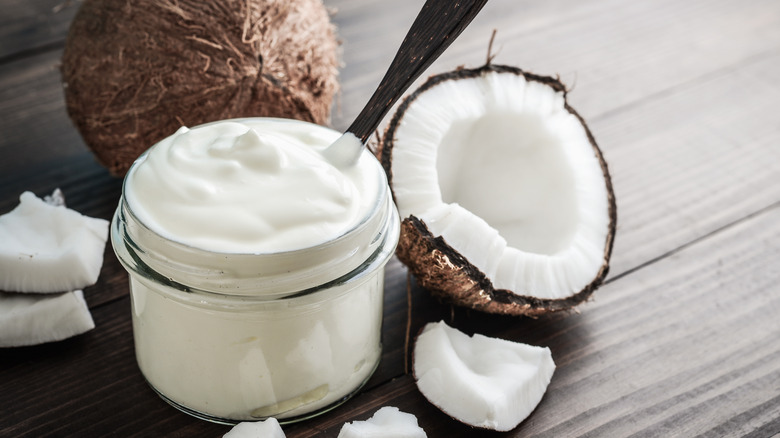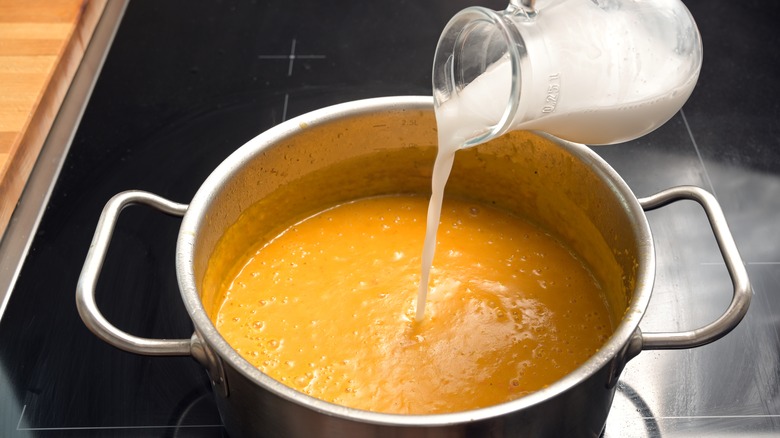The Exact Difference Between Coconut Milk And Cream
Hidden inside the tough shell of a coconut is the clear liquid we know as coconut water — the hydration powerhouse of our dreams — and a thick layer of white flesh, called the coconut meat. The meat can be processed into all sorts of foods, including velvety coconut cream and smooth coconut milk. Because these ingredients share the same base and even look similar, they are often confused for one another, but don't get it twisted. They're actually quite different, and using the wrong item can seriously throw off your recipes.
Coconut milk and cream are both made by blending the meat of the coconut with water. The difference is that the milk uses equal proportions of both, while cream uses four times as much meat for every part of water. As a result, the milk has a liquid consistency that resembles dairy-based milk, whereas the cream's fatty richness gives it a thick texture similar to that of heavy cream or condensed milk.
To make things even more complicated, coconut cream is also often mistaken for cream of coconut, which is another product that can trick you in the kitchen. While coconut milk and cream are usually unsweetened, cream of coconut is actually coconut cream with sugar added. It's great in cocktails like piña colada or when used as a substitute for sweetened condensed milk, but add it to savory recipes by accident, and you'll find them laced with a sugar rush!
When should you use coconut milk or cream?
There's no significant difference in the way these two coconut products taste, as both have a subtle coconut flavor, though the taste varies from brand to brand. Texture is what truly sets these items apart. The liquid texture of coconut milk means that it can be used much the same way as dairy milk — think smoothies, coffee, and cereal. Though its fat content pales in comparison to that of cream, it has enough richness to withstand the heat when cooked into soups, sauces, and curries. Choose full-fat coconut milk, and it shouldn't split or separate over the burner.
Meanwhile, coconut cream's thickness makes it behave more similarly to dairy cream. It's better suited to thicken a soup or a curry that's already too watered-down for milk to do it any favors. Additionally, its higher fat content makes coconut cream an excellent base for mousses, ice creams, cakes, and custards. You can even beat it to create a dairy-free whipped cream to switch up your dessert game. It also makes for a delicately nutty creamer in teas and coffees, adding a richer texture than milk.
As a final pro tip, you don't have to look all over for coconut cream if your local store only sells coconut milk. Just buy some full-fat coconut milk and pop it in the refrigerator. After a day or so, you'll find a thick blanket of solidified cream on top that can scooped off and put to use.


